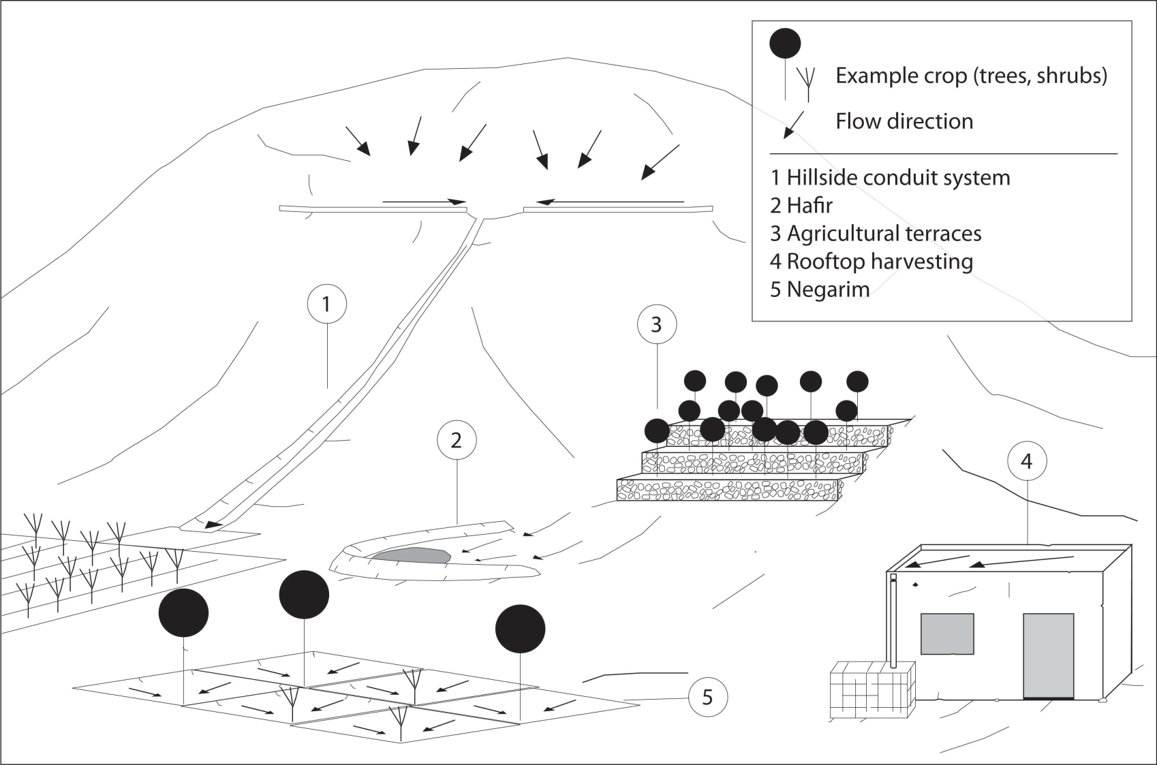Overland Flow
This category comprises the water balance components rainfall and surface runoff / overland flow. The Figure below shows examples of mirco- and macro runoff harvesting techniques, like the hillside conduit system, the so called hafir, which are distributed in Sudan, agricultural terraces, rooftop harvesting and the negarim.

Examples of micro- and macro runoff harvesting techniques. Slopes are exaggerated. (Beckers et al. 2013)
Agricultural terraces are a prominent human fingerprint on the landscape and are widely spread on the majority of continents on the earth (Tarolli et al. 2014). As terraces interrupt the slope gradient and lead to a stepwise decrease of slopes, terracing has an impact on hydrological processes: a) increase of water infiltration, b) control of overland flow and velocity and c) contribution to a reduction in soil erosion (Tarolli et al. 2014 and literature cited herein).
Hafirs, human-made semi-circular open reservoirs occuring in the region of present day Sudan. Already during the Meroitic period some 2000 years ago they served for the supply of animals and humans. Hafirs are frequently constructed in wide wadis or floodplains and are partly filled by floodwater (Berking and Schütt 2011).
Hillside conduit systems concentrate and channel water from the upslope area along a system of conduits to agricultural fields or settled area. They mainly focus in the minimisation of percolation or evaporation losses (Beckers et al. 2013).
But how can the tank cascade systems, introduced in Module 1 be categorized? If you would like to learn more about this topic, please follow this link.
The collection and storage of rainfall and runoff from roofs, plastered courtyards and squares is called rooftop harvesting. Advantage of these surfaces are, that they their construction material is mainlyofimpermeable and easy to keep clean (e. g. by removing sediments and litter). The harvested water is generally transferred by a gutter system to cisterns or reservoirs and utilised for animals, domestic consumption and small-scale irrigation purposes. Ancient examples of this technique are known from Minoan settlements on Crete (Mays 2010a) and for Resafa in Syria (Brinker 1991) (Beckers et al. 2013).